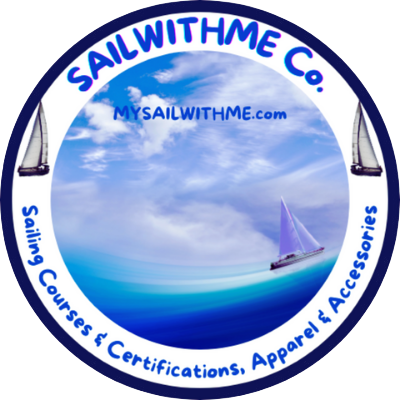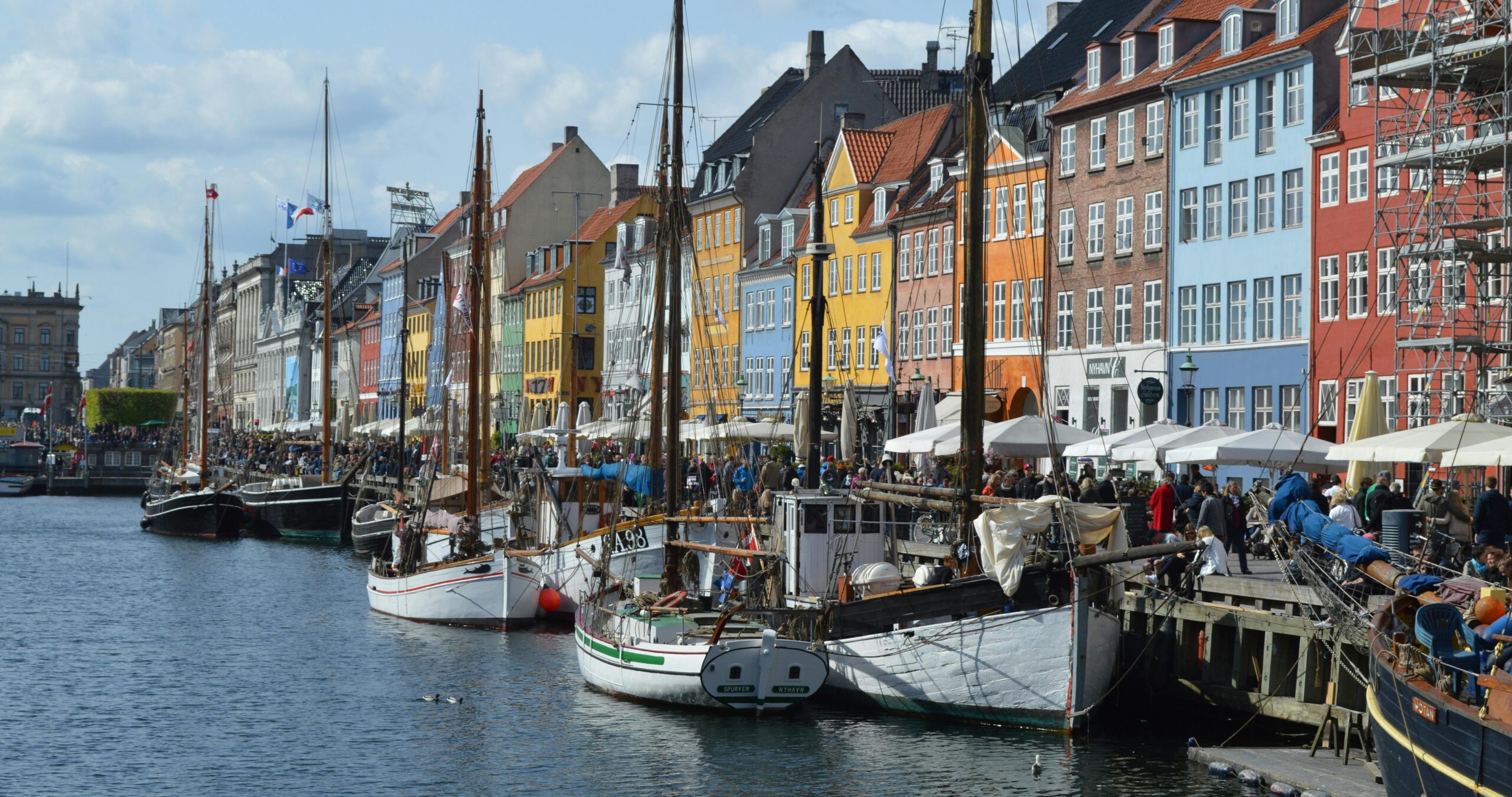Sailing boats come in a variety of shapes, sizes, and designs, each suited for different purposes, skill levels, and sailing environments. Whether you’re a novice sailor dreaming of your first boat or an experienced mariner exploring new horizons, understanding the types of sailing boats available can enhance your sailing experience and help you make informed choices.
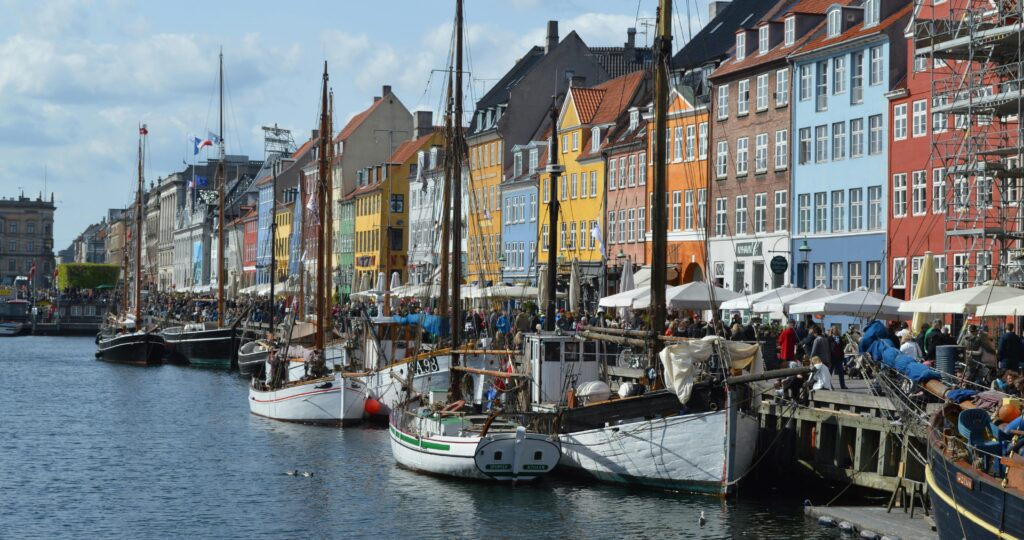
Each sailing boat is designed with specific functions in mind, which influence its size, shape, and features. In this article, we’ll explore various types of sailing boats, detailing their characteristics, uses, and suitability for different sailing adventures.
For better view click on images to expand
1. Dinghies

Characteristics
Size: Small, typically less than 20 feet.
Rigging: Simple, often with a single mast and one or two sails (mainsail and jib).
Hull: Lightweight, often made of fiberglass or plastic.
Steering: Tiller-steered.
Dinghies are ideal for beginners and casual sailors due to their simplicity and ease of handling. They are commonly used for:
Day Sailing: Perfect for short, leisurely sails in calm waters.
Learning: Many sailing schools use dinghies to teach basic sailing skills.
Racing: Dinghy racing is popular for its competitiveness and agility.
The Laser is a popular dinghy class known for its simplicity and performance, widely used in racing and sailing instruction.
2. Catamarans
Characteristics
Size: Range from small beach cats to large cruising catamarans.
Rigging: Generally, feature one mast with a mainsail and a jib or genoa.
Hull: Twin hulls connected by a deck or trampoline.
Steering: Often equipped with twin rudders and a wheel or tiller.
Catamarans are favored for their stability and spaciousness, making them suitable for:
Cruising: Provide comfortable living space for extended voyages.
Charter Sailing: Popular in the charter industry for group vacations.
Day Sailing: Smaller cats are excellent for day trips and recreational sailing.
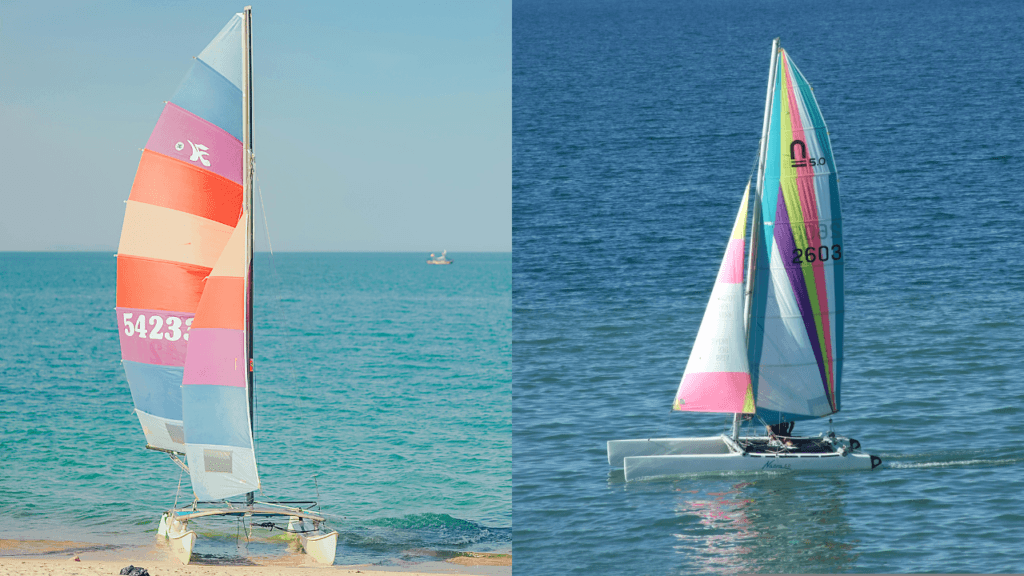
The Hobie Cat is a well-known beach catamaran popular for its simplicity and excitement in coastal waters.
3. Keelboats
Characteristics
Size: Range from 20 to over 100 feet.
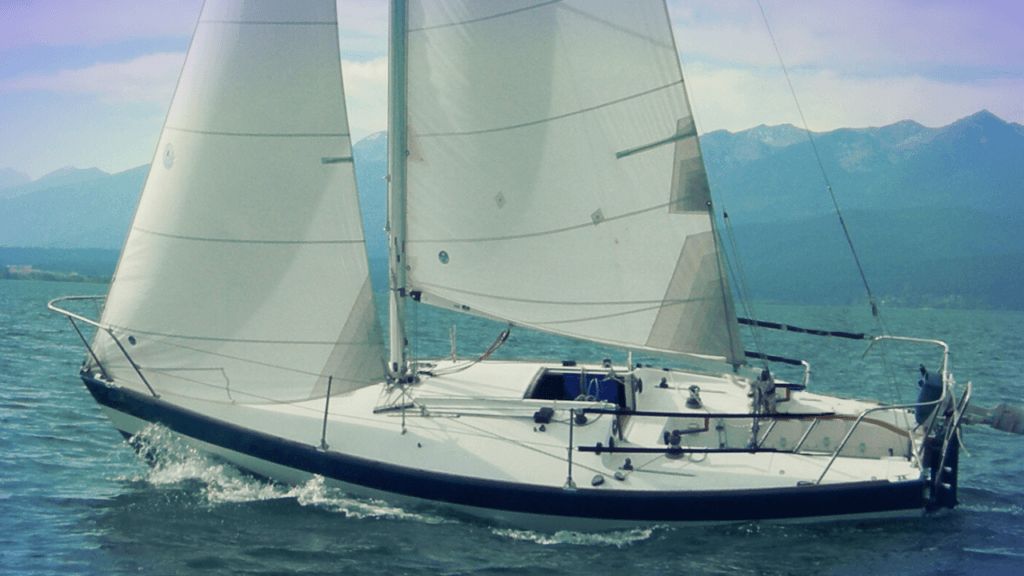
Rigging: Usually feature a sloop rig (single mast with a mainsail and one headsail), but can have other configurations.
Hull: Heavy, with a fixed keel for stability.
Steering: Typically steered with a wheel.
Keelboats are versatile and come in various sizes for different purposes:
Racing: Many keelboats are designed for competitive sailing.
Cruising: Suitable for coastal and offshore cruising.
Day Sailing: Smaller keelboats are ideal for day trips.
The J/24 is a popular keelboat known for its performance and versatility in racing and day sailing.
4. Sloops
Characteristics
Size: Range from small dinghies to large cruising yachts.
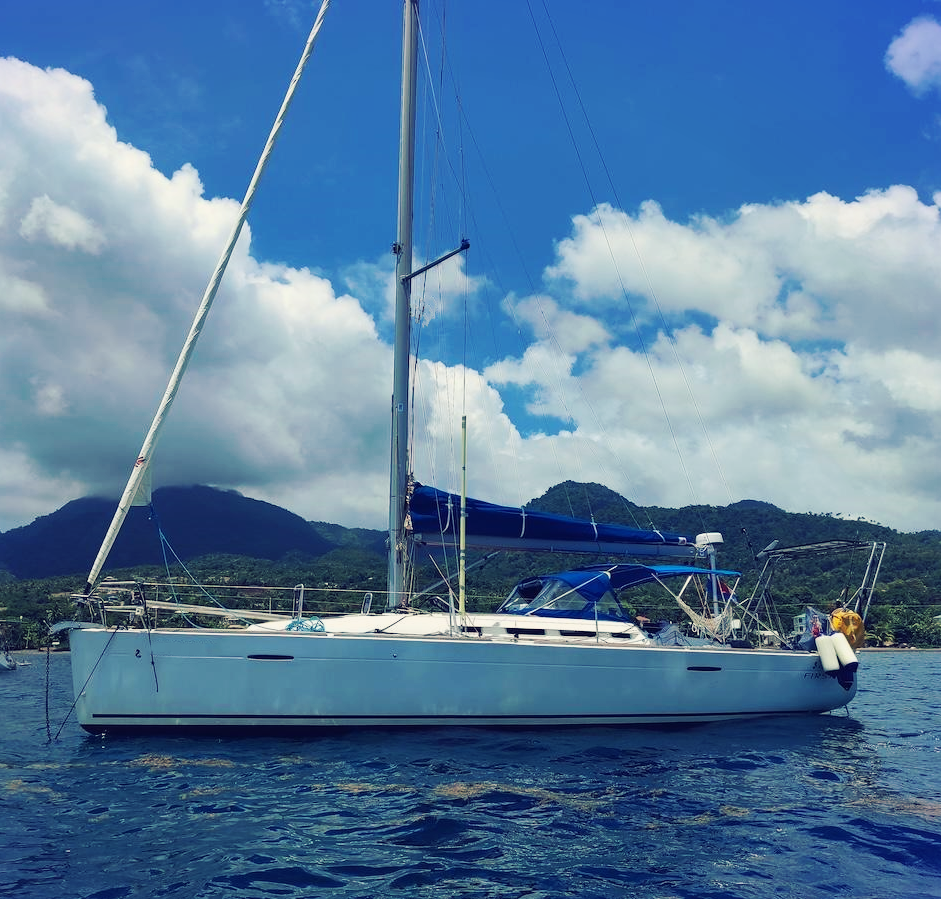
Rigging: Single mast with a mainsail and a single headsail (jib or genoa).
Hull: Monohull design.
Steering: Tiller or wheel.
Sloops are the most common type of sailing boat due to their straightforward rigging and ease of handling:
Day Sailing: Suitable for short, enjoyable sails.
Racing: Popular in many racing classes.
Cruising: Small to medium-sized sloops are great for coastal cruising.
The Beneteau First 40 is a popular cruising and racing sloop known for its performance and comfort.
5. Ketches
Characteristics
Size: Typically medium to large, around 35 to 65 feet.
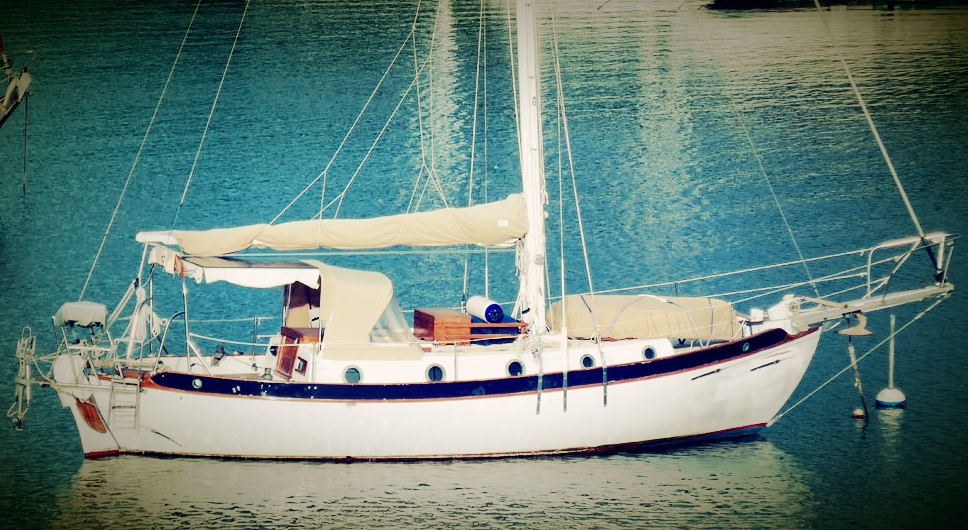
Rigging: Two masts; the mainmast is taller, and the shorter mizzenmast is positioned aft of the mainmast.
Hull: Monohull design.
Steering: Wheel or tiller.
Ketches offer versatility and balance in their sail plan:
Bluewater Cruising: Ideal for long-distance cruising with a balanced sail plan.
Coastal Cruising: Suitable for coastal and nearshore sailing.
Living Aboard: Their size and layout make them comfortable for liveaboard scenarios.
The Westsail 32 is a renowned bluewater cruising ketch, praised for its robustness and seaworthiness.
6. Yawls
Characteristics
Size: Similar to ketches, often between 30 and 60 feet.
Rigging: Two masts; the mainmast and a smaller mizzenmast located aft of the rudder post.
Hull: Monohull design.
Steering: Wheel or tiller.
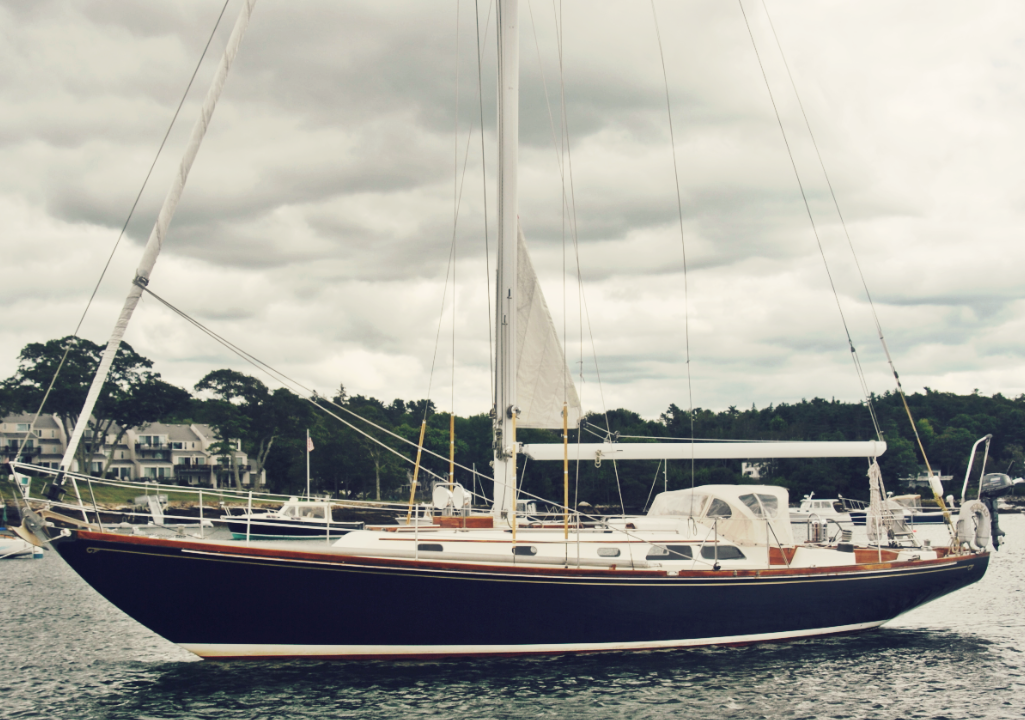
Yawls provide additional sail balance and versatility:
Cruising: Good for both coastal and offshore cruising.
Racing: Some yawls are designed for racing, taking advantage of their balanced sail plan.
Day Sailing: Smaller yawls can be used for enjoyable day sails.
The Hinckley Bermuda 40 is a classic yawl known for its elegance and performance.
7. Schooners
Characteristics
Size: Generally larger, often over 50 feet.
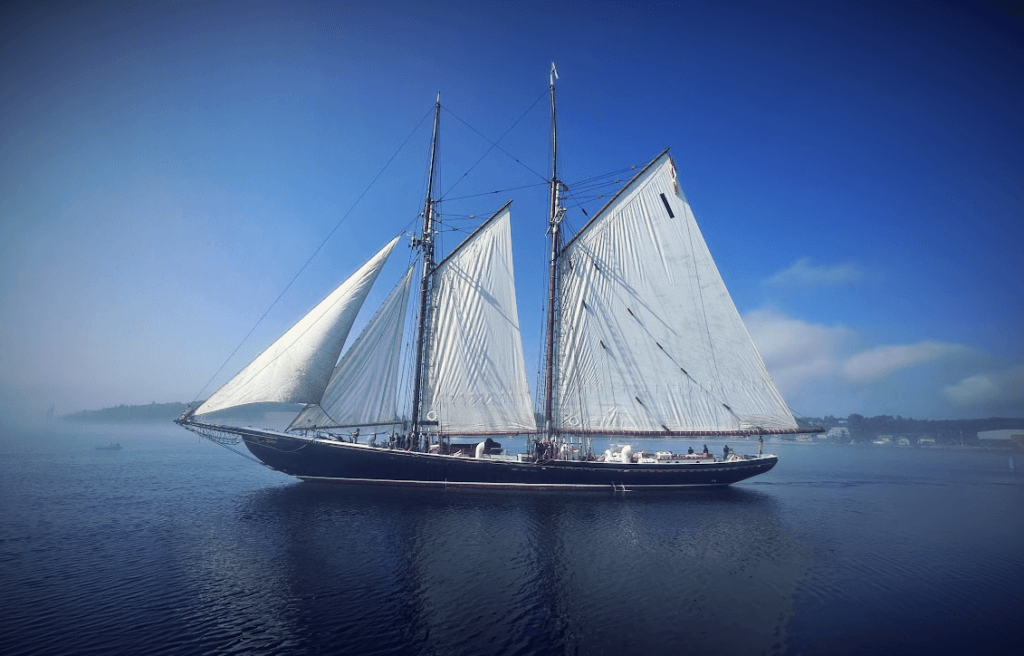
Rigging: Two or more masts; the foremast is shorter than the mainmast.
Hull: Monohull design.
Steering: Wheel steering.
Schooners are distinguished by their multiple masts and are often used for:
Traditional Sailing: Their design is reminiscent of classic sailing ships.
Cruising: Suitable for long-distance and offshore cruising.
Charter: Popular in the charter industry for group sailing experiences.
The Bluenose II is a famous schooner, celebrated for its historical significance and beautiful lines.
8. Trimarans
Characteristics
Size: Varies from small racing trimarans to large cruising models.
Rigging: Typically features a single mast with a mainsail and headsails.
Hull: Three hulls (one main hull and two smaller outrigger hulls).
Steering: Wheel or tiller.
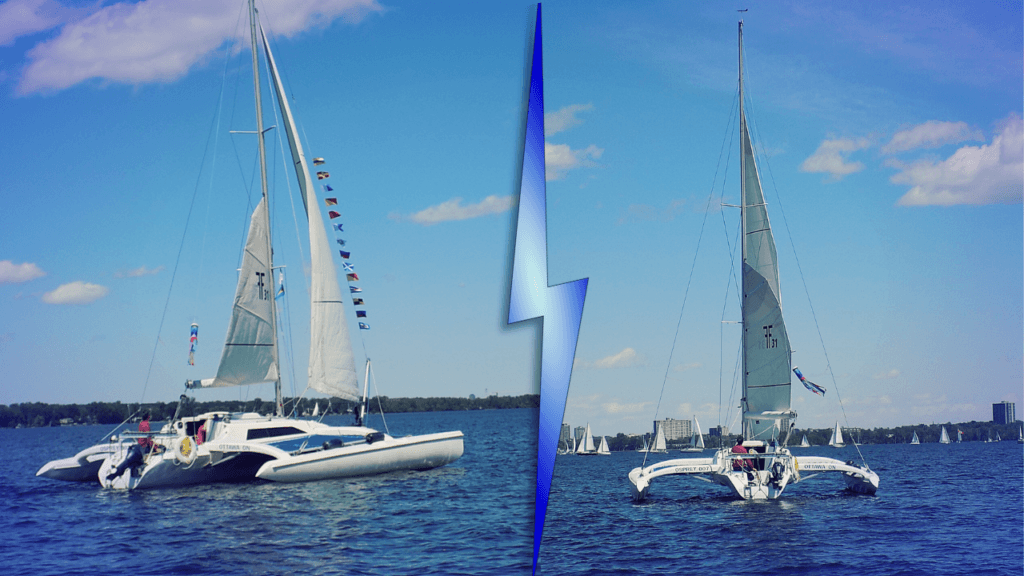
Trimarans are known for their speed and stability:
Racing: Excels in speed and agility, often used in high-performance racing.
Cruising: Larger models provide comfort and space for extended cruising.
Day Sailing: Smaller trimarans are ideal for recreational sailing.
The Corsair 31 is a versatile trimaran appreciated for its speed and comfort in both racing and cruising.
9. Bluewater Cruisers
Characteristics
Size: Generally larger, around 40 to 60 feet.
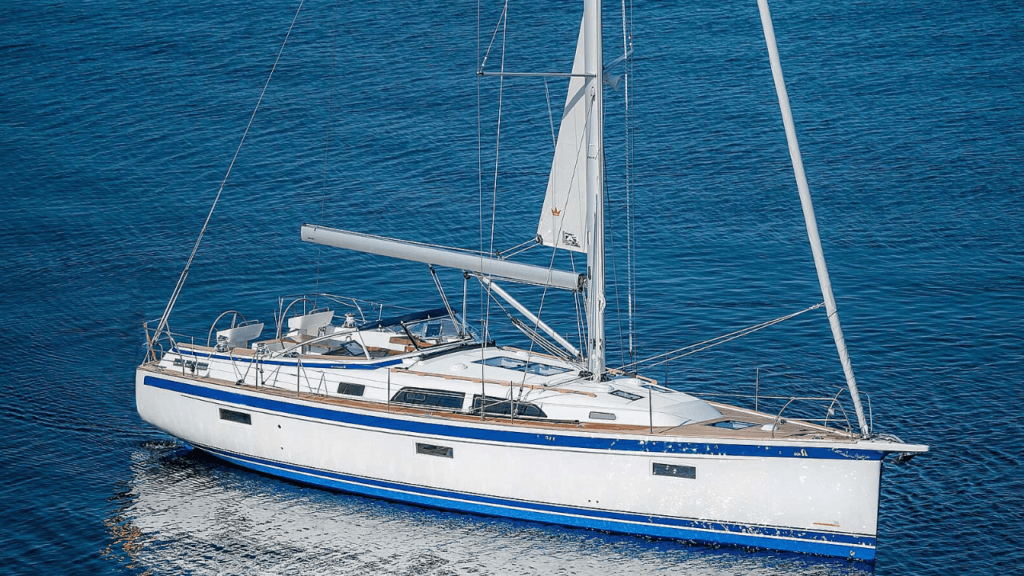
Rigging: Often feature sloop, ketch, or cutter rigs.
Hull: Built for durability and safety in open ocean conditions.
Steering: Typically equipped with a robust wheel steering system.
Bluewater cruisers are designed for long-distance and offshore voyages. Ocean Cruising: Ideal for crossing oceans and extended voyages.
Liveaboard: Suitable for living aboard for extended periods.
Expedition Sailing: Used for exploring remote and challenging waters.
The Hallberg-Rassy 44 is a renowned bluewater cruiser known for its robustness and comfort on long voyages.
10. Cutter-Rigged Sailboats
Characteristics
Size: Typically medium to large, around 30 to 50 feet.
Rigging: Single mast with two or more headsails (jib and staysail).
Hull: Monohull design.
Steering: Tiller or wheel.
Cutters offer versatility with their multiple headsails:
Cruising: Well-suited for both coastal and offshore cruising.
Racing: Some cutters are designed for competitive sailing.
Liveaboard: Comfortable for extended living aboard.
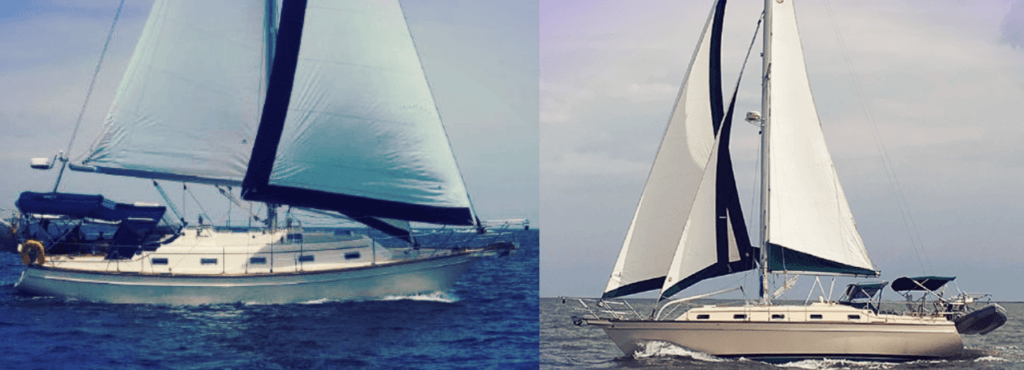
The Island Packet 380 is a popular cutter known for its seaworthiness and spacious interior.
11. Gaff-Rigged Sailboats
Characteristics
Size: Varies from small dinghies to larger traditional sailboats.

Rigging: Features a four-sided gaff sail with a spar (gaff) that extends from the mast.
Hull: Traditional monohull design.
Steering: Tiller or wheel.
Gaff-rigged sailboats are appreciated for their classic appeal and unique rigging:
Traditional Sailing: Offers a nostalgic sailing experience with a distinctive rig.
Day Sailing: Smaller gaff-rigged boats are ideal for leisurely sails.
Cruising: Larger gaff-rigged boats can be used for coastal cruising.
The Norfolk Gypsy is a classic gaff-rigged sailboat known for its charm and traditional sailing characteristics.
12. Tall Ships

Characteristics
Size: Large, often over 100 feet.
Rigging: Multiple masts with complex rigging and square sails.
Hull: Traditionally designed, often with wooden or steel construction.
Steering: Wheel steering.
Tall ships are iconic and are used for:
Sail Training: Often used to teach traditional sailing skills.
Historical Reenactments: Popular for historical events and maritime festivals.
Cruising: Some tall ships offer passenger cruises.
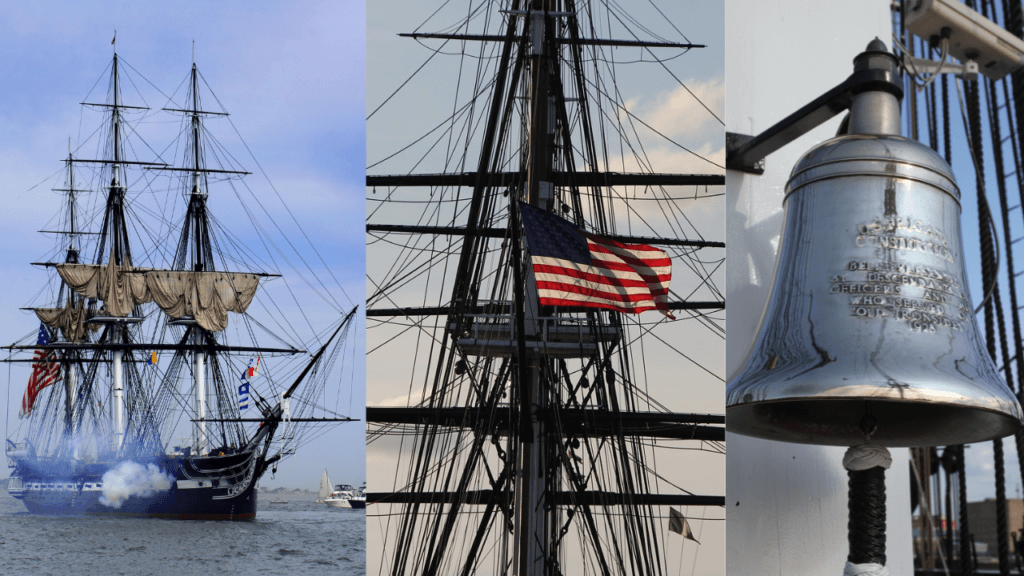
The USS Constitution is a famous tall ship, celebrated for its historical significance and preserved as a museum ship.
13. Pocket Cruisers
Characteristics
Size: Small to medium, typically 20 to 30 feet.
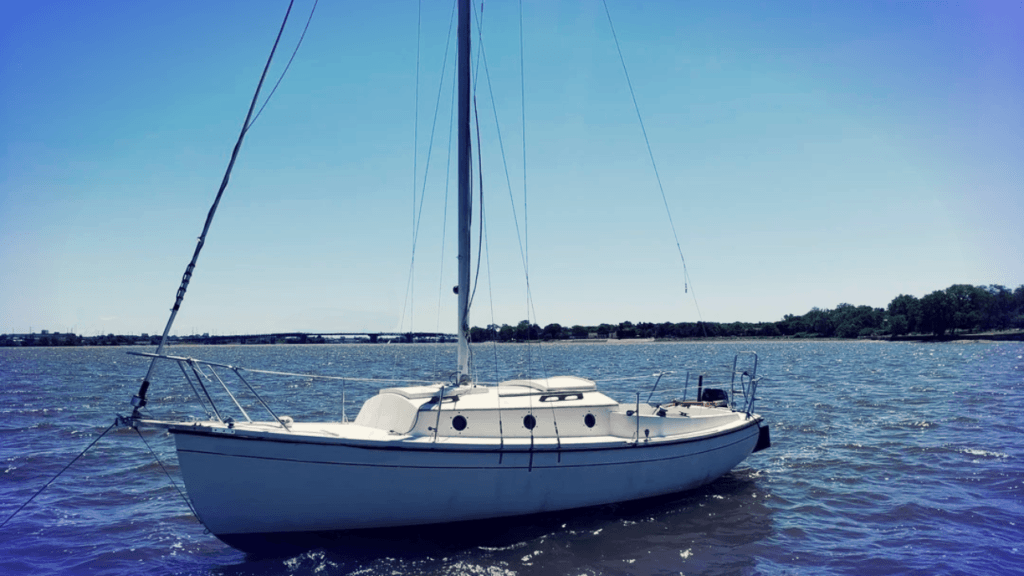
Rigging: Often feature sloop or cutter rigs.
Hull: Compact monohull design.
Steering: Tiller or wheel.
Pocket cruisers offer a balance between comfort and compactness:
Coastal Cruising: Ideal for exploring coastal waters and short voyages.
Trailer Sailing: Many are trailerable, making them easy to transport and launch.
Weekend Sailing: Suitable for weekend getaways and overnight trips.
The Com-Pac 23 is a popular pocket cruiser known for its compact size and versatility in coastal cruising.
14. Daysailers
Characteristics
Size: Small to medium, generally less than 30 feet.
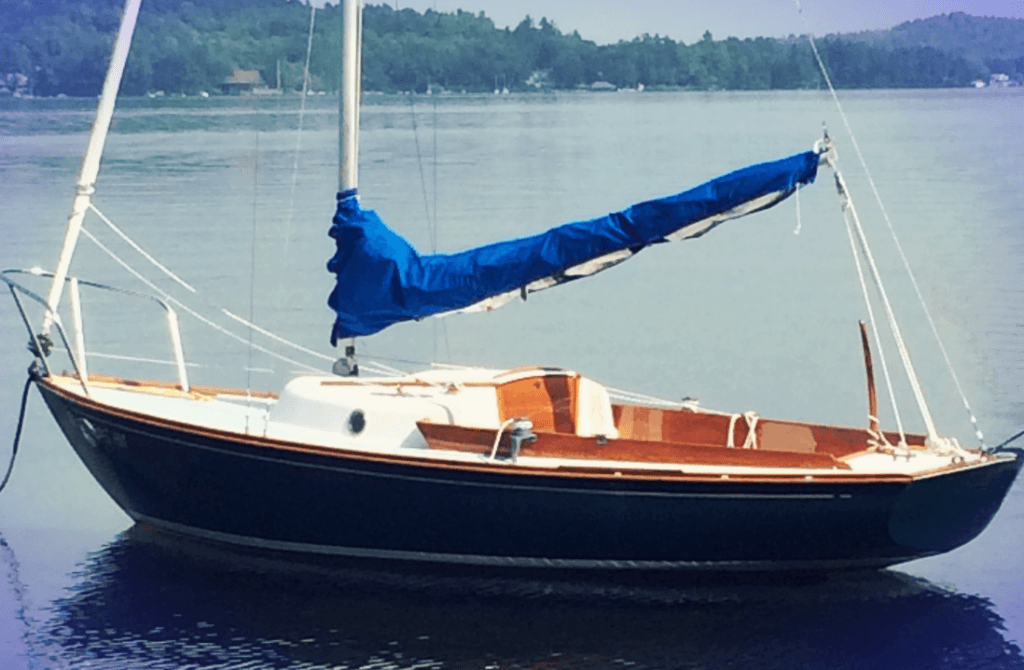
Rigging: Simple, often with a sloop rig.
Hull: Lightweight monohull design.
Steering: Tiller steering.
Daysailers are perfect for short, enjoyable sails:
Day Sailing: Designed for short trips and casual sailing.
Learning: Great for beginners learning the basics of sailing.
Recreational Sailing: Ideal for family outings and recreational use.
The Cape Dory 19 is a classic daysailer known for its simplicity and ease of handling.
15. Performance Racing Sailboats
Characteristics
Size: Varies, from small dinghies to large yachts.
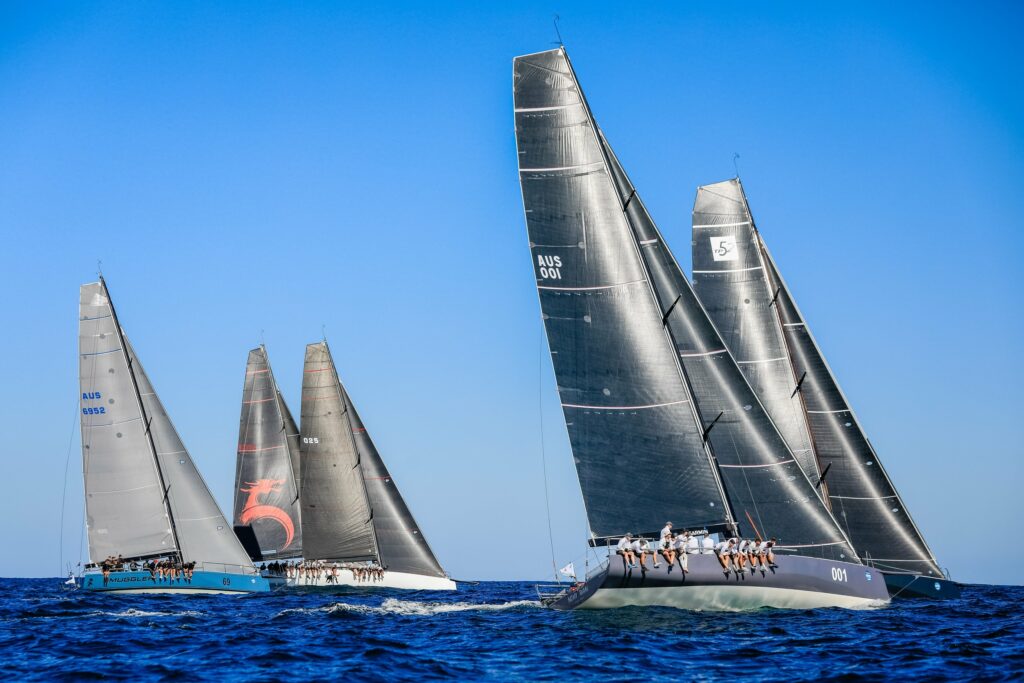
Rigging: Designed for speed and agility, often featuring advanced sail and hull designs.
Hull: Lightweight and optimized for speed.
Steering: Typically equipped with a high-performance wheel or tiller system.
Performance racing sailboats are built for competitive sailing:
Racing: Designed to excel in competitive racing environments.
Regattas: Often used in regattas and racing events.
Speed Sailing: Built for sailors seeking high-performance and adrenaline-pumping speeds.
The TP52 is a well-known performance racing sailboat, celebrated for its speed and agility in competitive racing.
Navigating Innovations: Modern Sailing Boat Technologies and Materials
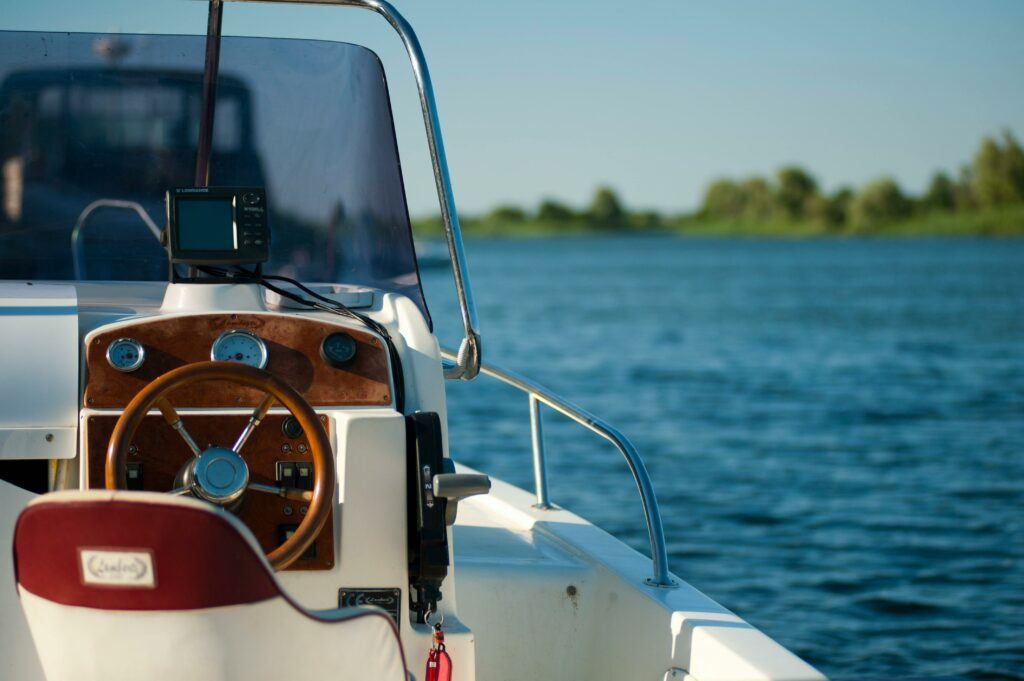
Sailing boats have come a long way from the days of wooden hulls and hemp ropes. Today’s vessels are marvels of modern engineering, combining timeless design principles with cutting-edge technology. The materials and tech that go into sailing boats have a huge impact on everything from speed and stability to durability and maintenance.
The shift in building materials has been revolutionary in the sailing world. Traditionally built with wood, new boats often utilize fiberglass, aluminum, and carbon fiber, offering dramatic improvements in strength and weight. Carbon fiber, in particular, has become synonymous with high-performance boats because it’s lightweight yet exceptionally robust.
Advancements in technology also play a pivotal role. Modern sailing boats may feature hydraulic systems, advanced navigation electronics, and even automated sailing functions. These innovations enhance the sailing experience by making boats faster, safer, and more comfortable. For sailors, this means less time wrestling with gear and more time enjoying the voyage.
Sustainability is increasingly at the fore of boat construction. In response to environmental concerns, some builders now use eco-friendly materials and processes. Solar panels, electric propulsion, and other renewable technologies are not just buzzwords but are being integrated into designs to reduce the sailing world’s footprint.
This surge in innovation is reshaping what’s possible on the water. With boats that are now lighter, stronger, and more efficient, sailors can venture further and in greater comfort than ever before. But it isn’t just about technical specs; it’s about the thrilling possibilities these modern sailing boats unlock for adventurers around the globe.
Chart Your Own Course: Choosing the Right Sailing Boat for You
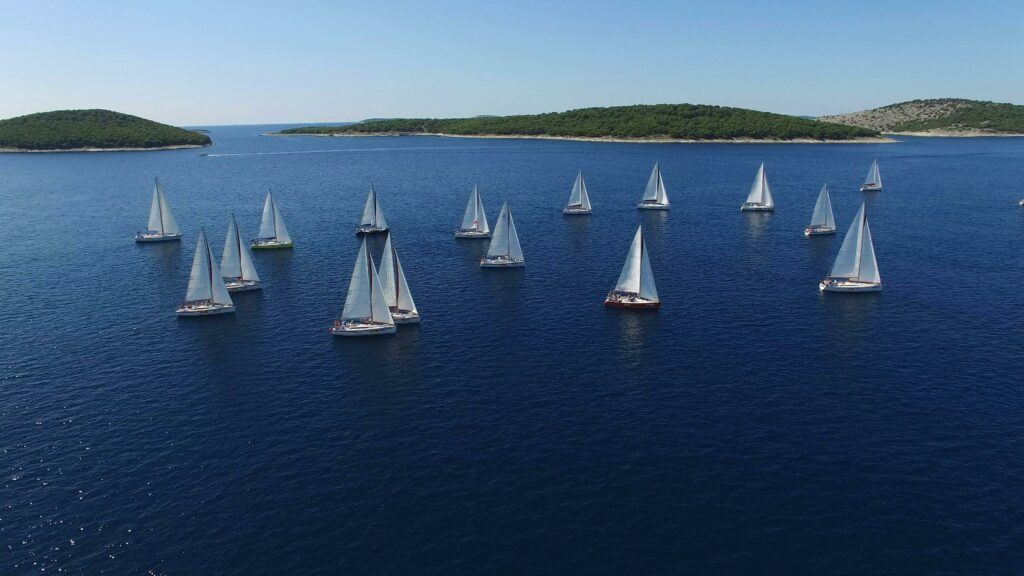
Choosing the right type of sailing boat depends on your intended use, experience level, and sailing aspirations. Before you make your decision, weigh your options carefully. Think about what you’ll primarily use your sailboat for, as well as your own comfort level with different types of boats. Whether you’re looking to learn the basics, embark on coastal cruises, race competitively, or explore the open ocean, understanding the different types of sailing boats will help you make an informed decision and enhance your sailing experience. Investing time in learning about these boats, their features, and their uses will not only help you select the best boat for your needs but also deepen your appreciation for the diverse and fascinating world of sailing.
If you’re new to sailing, you may want to start with a smaller, more manageable vessel. Meanwhile, seasoned sailors might look for something that challenges them or suits long voyages. Your budget will also play a critical role in your decision-making process.
The true test comes from stepping aboard and taking the boat out on the water. Trial runs will give you the best insight into how a boat handles and if it’s a good fit for you. Whenever possible, seek out opportunities for test sails. Your first sailing boat may not be your last. Your needs and preferences may evolve as you gain experience, so it’s all right to start with what works for you now and upgrade later.
Lastly, I urge you to immerse yourself in the sailing community. Engaging with other sailors can provide valuable knowledge and first-hand experiences that may guide your selection. And hey, it’s also a lot of fun. Happy Sailing!
